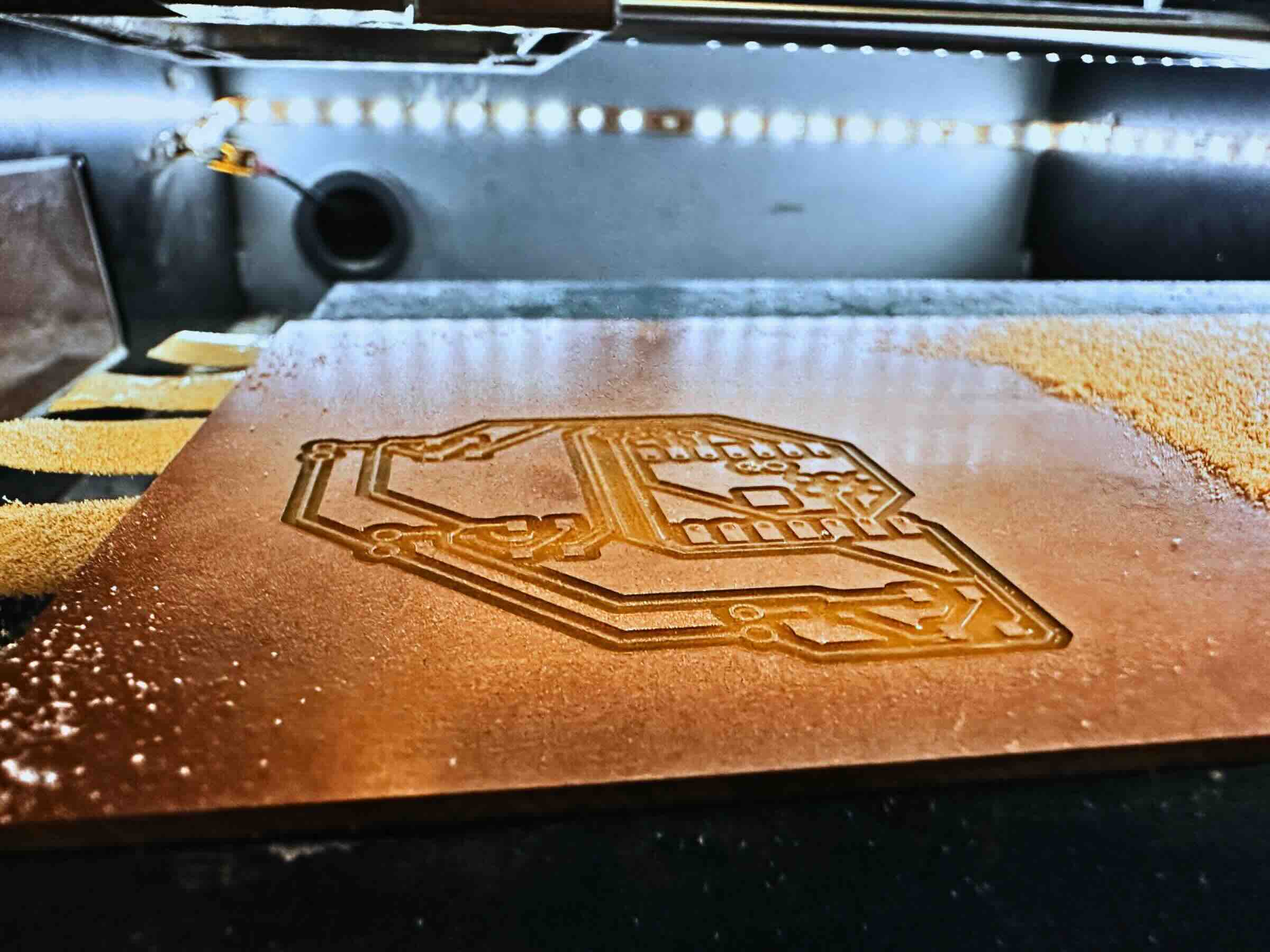Applications & Implications
Assignment 17 - Fab Academy Barcelona

Overview
In class we reviewed what we can to with the skills we've learned, and generally how the final project should come together. More detail about the final project can be found on the final project page, I'll link there where relevant. You can also see the full project plan on that page.
Project Scope & Plan
What will it do?
I'm designing a sensor that can be worn on the back, when an object approaches it will vibrate. As the object gets closer it will vibrate more. The intention is sensory addition" - to give the person an added "sense" of when something is approaching them from behind. I'm interested to see how this is integrated into lived, conscious experience if worn regularly.
Who's done what beforehand?
I've been particularly inspired by work on sensory addition by David Eaglman at Stanford. He wrote an article in 2023 about current and future uses of haptics in particular to expand the human sensory repretoire. I've had chatGPT summarize it here:
The article by David M. Eagleman and Michael V. Perrotta explores the future of sensory substitution, addition, and expansion through haptic devices, which use the sense of touch to convey information to the brain. These devices, which are increasingly wearable and non-invasive, can replace lost senses, enhance existing ones, and introduce entirely new sensory experiences. For example, current applications include wristbands that help the deaf perceive sound through vibrations on the skin, while future uses could involve devices that allow users to sense electromagnetic fields or environmental temperatures. Future development should focus on creating interactive and user-specific devices that offer high-fidelity, real-time information transfer and provide direct subjective experiences. Emphasizing interdisciplinary collaboration, affordability, and accessibility will ensure these devices are practical and beneficial for a wide range of users, ultimately expanding human sensory capabilities in innovative and transformative ways.
What will you design?
I will design the outer shell, circuit board, and facilitating integration components as well as the software to transform input from the ToF (distance) sensor to a pattern of vibration.
What materials and components will be used? Where will come from? How much will they cost?
The ToF sensors, haptic motors, microcontrollers, electronics components (e.g. mosfets, resistors), and other raw materials and machinery needed to make the device will be acquired - a summary is provided in the table below.
| Component | Info / Model Number | Quantity | Supplier | Product Code | Unit Price | Total Price |
|---|---|---|---|---|---|---|
| ToF board | VL53L0X | 2 | Adafruit | 3317 | $14.95 | $29.90 |
| Esp32c3 Sense MCU | ESP32-S3 | 2 | Seeed | 113991054 | $4.99 | $9.98 |
| Haptic Motors | HAPTIC-TBD | 4 | Supplier X | 00000 | $X.00 | $X.00 |
| N Channel Mosfets - 30V 6A | SSM3K333R | 6 | Digikey | SSM3K333RLFTR-ND | $0.30 | $1.80 |
| Resistors | TBD | 12 | Supplier | 123 | $XX.99 | $XX.98 |
| PCB Board | PCB-TBD | 2 | N/A (Fab Lab) | 00000 | $X.00 | $X.00 |
| 3D printer raw material | HOUSING-TBD | 2 | Supplier X | 00000 | $X.00 | $X.00 |
| Battery | Battery-TBD | 2 | Supplier X | 00000 | $X.00 | $X.00 |
| Wiring | TBD | TBD | Supplier X | 00000 | $X.00 | $X.00 |
| Total Cost | $XX.00 | |||||
What parts and systems will be made? What processes will be used?
- Circuit Board - designed in kicad, edited in Inkscape, machine code generated with help of mods.
- Outer Shell - designed in Rhino, printed with 3D printer.
- Backing (w embedded haptics) - designed in Rhino, possibly molded.
- Inner placement components - TBD, likely 3D printed.
What questions need to be answered?
The main outstanding questions are:
- Can I charge battery directly from esp32?
- How will I fit components in outer shell/housing? What internal structures to I need to ensure they stay in place?
- How can I embed haptic motors so they are close to the back of the product and effectively transmit vibration to skin, even with clothes?
- How will I attach device to body over clothes? (e.g. pins?)
- What is an effective transformation of distance to vibration? What will the program look like?
- Is one ToF sensor enough per device or do I need multiple facing in several directions?
How will it be evaluated?
The device must:
- Vibrate when an object approaches the sensor, starting at around 1-2m away.
- Vibrate more or with different, discernable pattern as object approaches sensor.
- A user must be able to feel the vibration and differentiate between objects at different distances - at LEAST with 4 different stages (no vibration = very far; light vibration pattern = far; medium vibration pattern = intermediate distance; strong vibration pattern = close).
